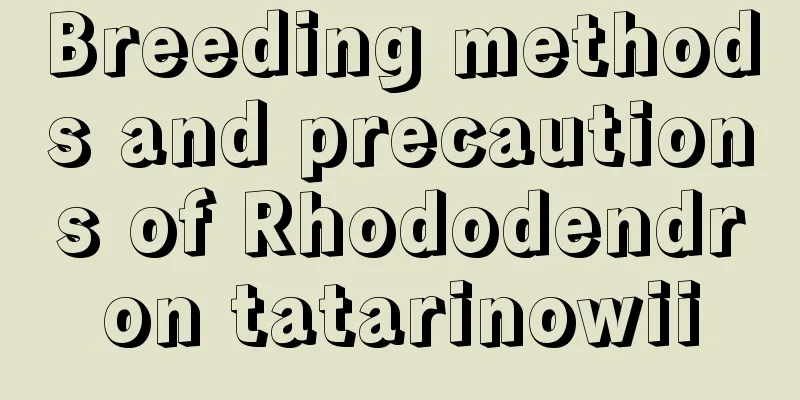Mosquito repellent grass cutting propagation method and precautions

How to breed mosquito repellent grassThe origin of mosquito repellent grass is in southern Africa. It prefers a warm and humid growing environment and has poor cold resistance. Its reproduction methods include sowing, cuttings, grafting and layering. It generally uses cuttings or grafting for reproduction because these two methods are simpler and faster. For mosquito repellent grass, the best time for cuttings is April-May, or September-October each year. Mosquito repellent grass cutting propagation methodFirst, cut thick branches with terminal buds, 5-8 cm long, wait until the incision is dry before cutting, and keep 2-3 terminal buds. After the cuttings are completed, shade and moisturizing measures need to be taken. It will take about 15-20 days for the cuttings to take root and survive. Precautions for mosquito repellent grass cutting propagationMosquito repellent grass is relatively drought-resistant, so do not water it in large quantities during the growth process, otherwise it will easily cause water accumulation, which will lead to root rot and cause excessive growth. You can water it more appropriately during the flowering period. |
<<: How to divide Asparagus into pots and plant divisions? Methods of division propagation
>>: How to change soil and pot for white palm
Recommend
Breeding methods and precautions of four-season azalea
1. Matrix Rhododendron has high requirements for ...
What flowers are suitable for growing in Ulanqab? What are the city flowers and trees?
1. Climate characteristics of Ulanqab Ulanqab has...
How to divide and transplant the dripping guanyin
1. How to divide the plant 1. Division time: The ...
Does Tongan red bougainvillea bloom frequently?
Tongan Red Bougainvillea is a very famous variety...
Cultivation methods and precautions of the dwarf dwarf tree
The Chinese ivy is relatively easy to grow. It is...
How to grow goldfish flower spider plant to make it bloom?
Goldfish flower spider plant is an indoor plant w...
How many kilograms of onion are generally produced per mu? How much is the profit of planting one mu of onion?
Onion yield per mu The per-acre yield of vegetabl...
When is the best time to harvest onions?
Green onion is a very common vegetable and a very...
How to propagate Gloxinia flowers
1. Planting 1. Generally, it is selected from Aug...
How to grow Staghorn fern
1. Soil preparation Because it is an epiphytic pl...
How to get water for hydroponics
Purified water is better than tap water Purified ...
How to fertilize Osmanthus fragrans
1. Time of fertilization: Osmanthus fragrans like...
Why are the leaves of geranium turning yellow?
1. The temperature is too high 1. Reason: If the ...
The significance and function of garden flower and tree pruning
The significance and function of garden flower an...
How to grow water ferns
1. Maintenance methods 1. Temperature: Water fern...









